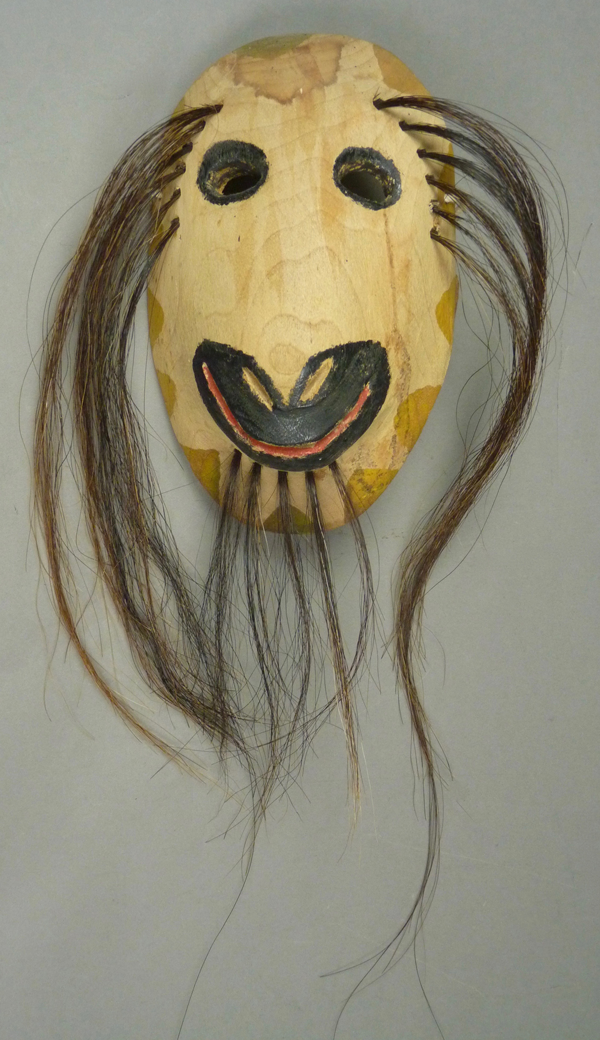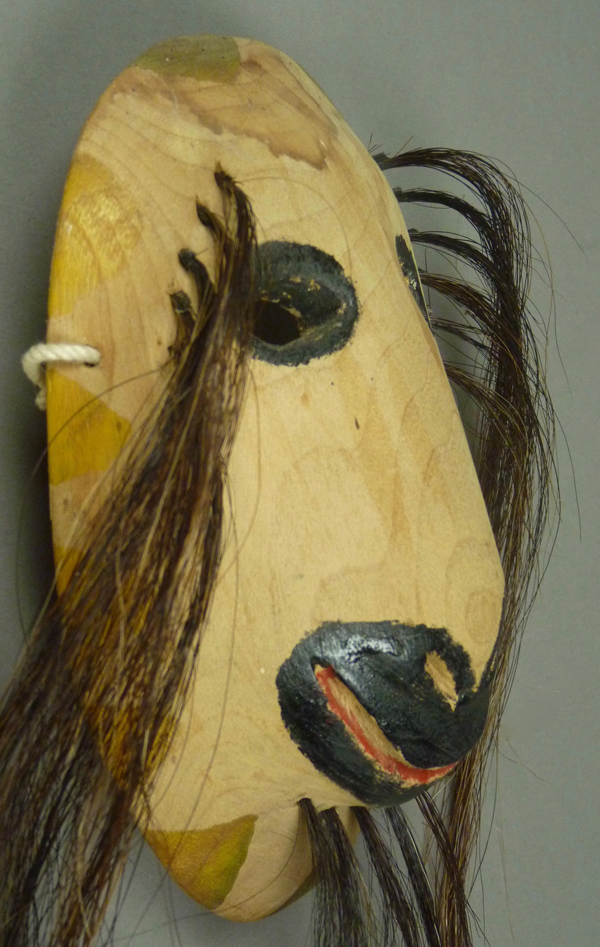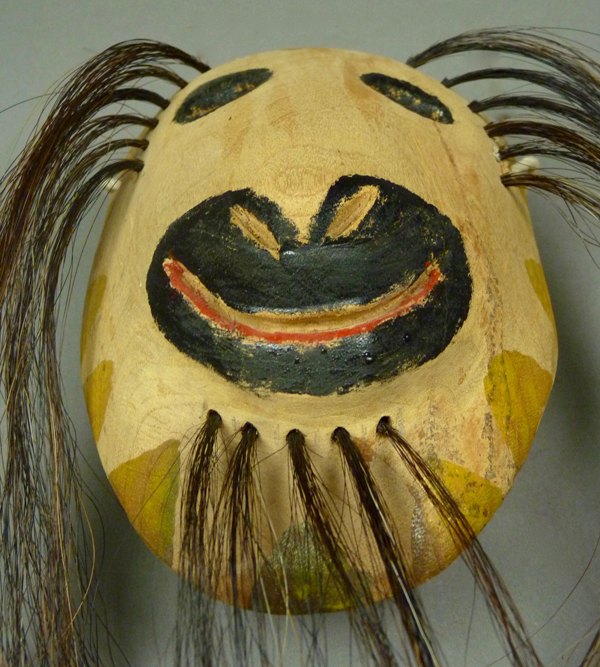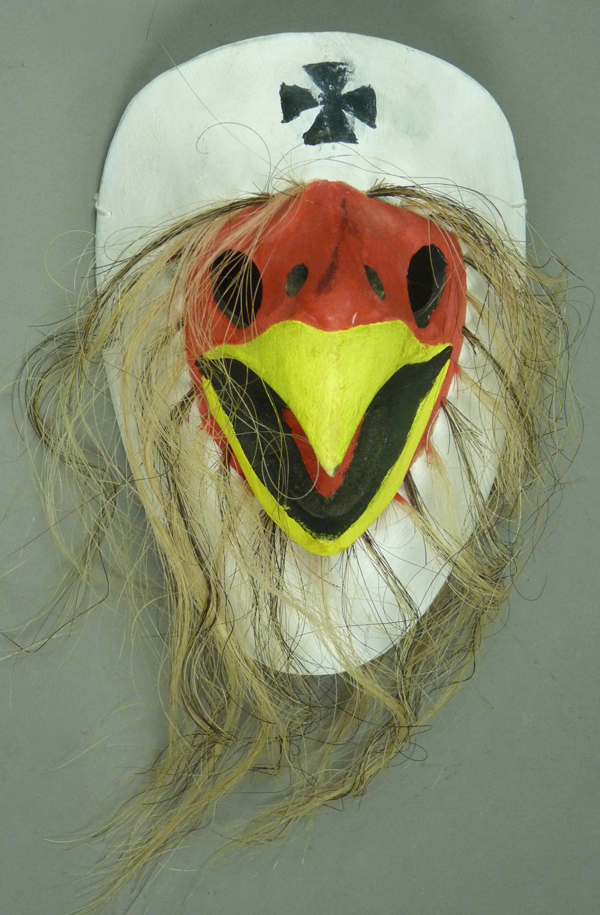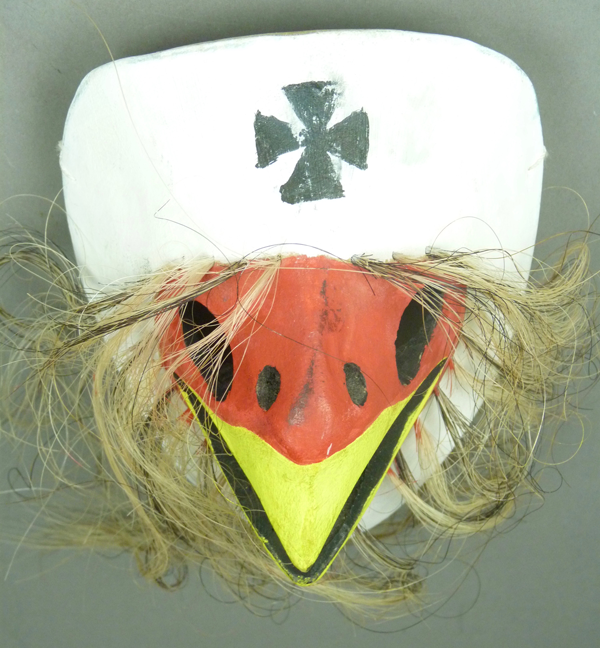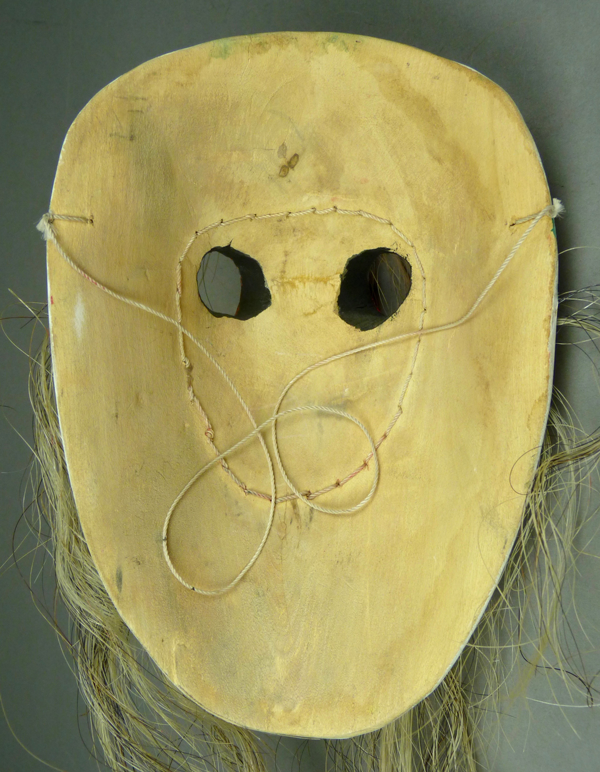In 2007 I bought two Pascola masks from Sinaloa that lacked an identified carver, and they did not seem to have been carved by the same hand. I believe that both have been danced.
The first one is a Goat Pascola mask. The face was left unpainted, the features were painted black (with a red mouth), and a rim design was added with a transparent coating, a strange innovation in my experience. The brown area on the forehead appears to be a natural stain in the wood.
As you may recall, Goat Pascola masks are very commonly used in Sinaloa; goats may be the favorite mask style. I certainly find them charming, and on this mask I particularly like how the mouth and muzzle have been integrated by the paint.
I suppose that varnish was used to indicate the rim design.
There is even a transparent triangle on the top of the mask, but it looks different from the rest because the pigmented sap wood shows through the decorative coating.
This mask is 8 inches tall, 5 inches wide, and 2 inches deep.
This mask may have been very briefly danced because it does have a proper strap and that strap is lightly soiled.
The second mask has a Parrot face.
This is yet another example of the use of animals from the Desert World to provide faces for dance masks, which is a recent trend.
Parrots are comical creatures as they fly raucously overhead. Pascola dancers are said to be clowns, although I also view them as shamanic. The loud tongue of this parrot is carved in relief on the floor of the mouth.
The forehead cross was very simply sketched.
This mask is 8 inches tall, 5¼ inches wide, and 3¼ inches deep.
The back of this mask has mild staining from use; it was certainly danced.
Next week we will examine a group of Sinaloa Pascolas with prominent teeth.
Bryan Stevens

